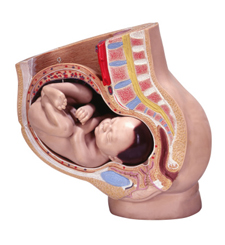Webster Technique

Resolving subluxations where the sacrum joins the pelvis (hip) helps balance the pelvis.
Developed by the late Larry Webster, D.C., and taught chiropractors around the world, the Webster Technique helps release stress on the pelvis, relaxing surrounding ligaments and reducing the sacral subluxation to help restore more normal function.
The Webster Technique is a specific chiropractic adjustment that aims to restore balance in the sacrum and pelvis and reduces tension in the surrounding muscles and ligaments. This is important for expectant mothers, as the primary goal of the Webster Technique is to create a space for the baby to move into the optimal head-down position naturally.
The Webster Technique uses a safe and gentle, chiropractic adjustment combined with soft tissue work on associated ligaments and muscles, particularly the round ligament. No direct stress is ever applied to the baby. The process generally includes the following steps: Pelvic assessment, chiropractic adjustment, round ligament release. Round ligament support the growing uterus and can become tight and caused pain as uterus expands during pregnancy. By releasing the tension within a round ligament the distortion within the uterus is diminished, which allows for a smooth and easy delivery for the baby at the time of birth.
High Success Rate
The July/August 2002 issue of the Journal of Manipulative and Physiological Therapeutics reports that 82% of chiropractors using the Webster Technique reported success in reducing the sacral subluxation.
Sometimes when using the Webster Technique, the associated dysfunction of the sacroiliac joint can be reduced with just one adjustment. But usually it takes between three to 10 visits over a several week period.
Because the Webster Technique relies on the inborn intelligence of the mother and baby, there is little risk. The Webster Technique is based on the positive experiences of pregnant patients, the clinical experience of its many practitioners, academic studies on the subject of sacral subluxation and its consequences to proper pelvic function.
